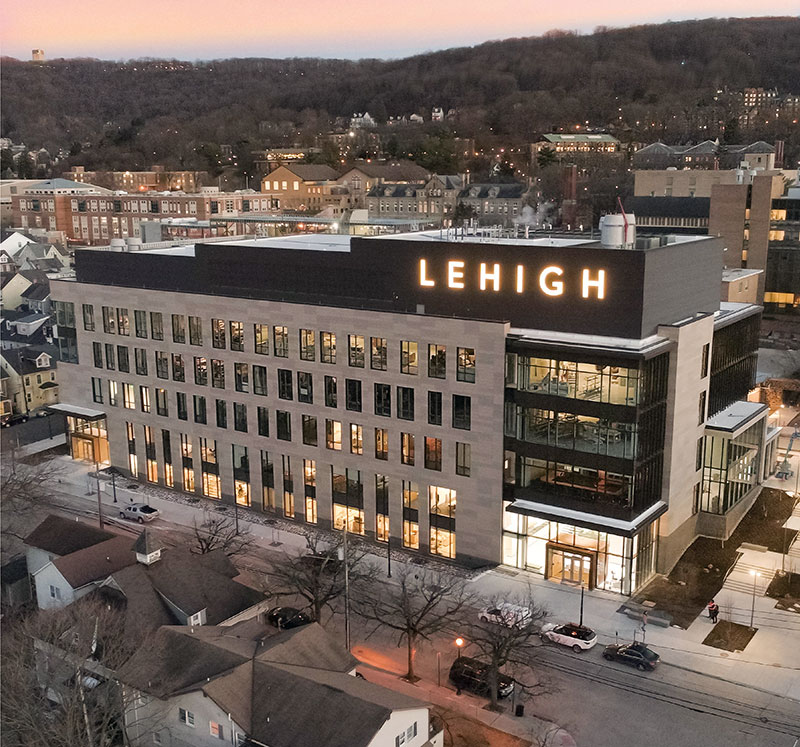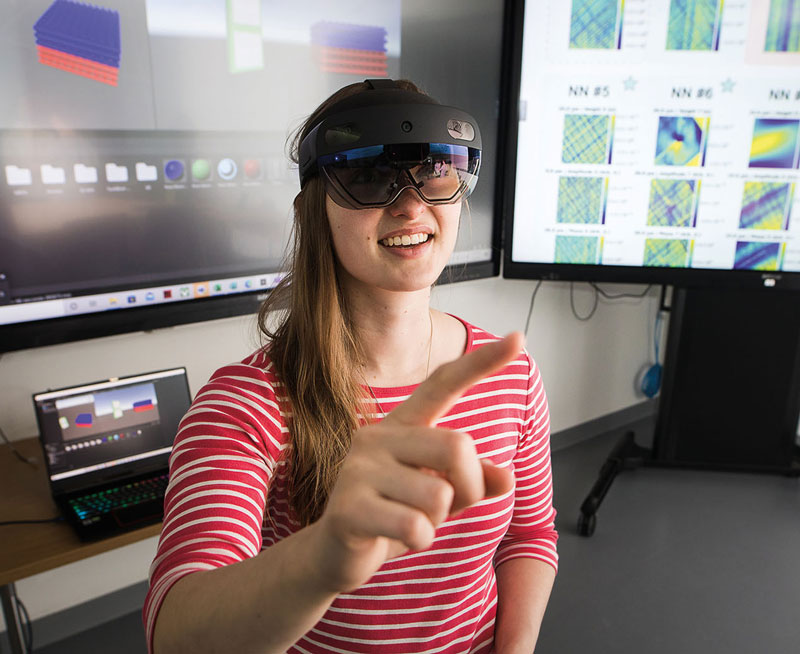 Lehigh’s new Health, Science and Technology Building, home to the College of Health, has opened on the Asa Packer campus, signaling an expanded era of interdisciplinary research at the university.
Lehigh’s new Health, Science and Technology Building, home to the College of Health, has opened on the Asa Packer campus, signaling an expanded era of interdisciplinary research at the university.
In all, 32 faculty members and 15 labs from existing areas on campus, including the College of Health, the Rossin College, and the College of Arts and Sciences, were moved into the building in early 2022.
The facility features open-concept labs, integrated work spaces, shared meeting spaces instead of formal classrooms, and a forum area—all designed to encourage collaboration across disciplines and with the community.
“Being in HST at this early stage is very exciting,” says Angela Brown, an associate professor of chemical and biomolecular engineering. “It feels like more than just a new building—it’s more like an entirely new way of approaching research. The space is beautiful, and though we are just getting settled in, I can already see it working as intended.”
At 200,000 square feet, the HST Building is the largest ever constructed by Lehigh and the first with a community room featuring doors that open directly onto the South Bethlehem neighborhood.
 Research facilities “traditionally have been designed in such a way to create separate little boxes where particular labs, faculty, and projects can be done,” says Provost Nathan Urban. The HST Building “eliminates walls [and] eliminates barriers to the kind of collaboration we think is critical for advancing research areas that are going to be a focus for Lehigh, for the country, and to some extent, the world.”
Research facilities “traditionally have been designed in such a way to create separate little boxes where particular labs, faculty, and projects can be done,” says Provost Nathan Urban. The HST Building “eliminates walls [and] eliminates barriers to the kind of collaboration we think is critical for advancing research areas that are going to be a focus for Lehigh, for the country, and to some extent, the world.”
Open staircases offer views between floors, encouraging interactions among faculty, staff, and students as they go about their day. Lab spaces can be easily reconfigured for the different disciplines. Glass walls replace closed-in offices and narrow hallways.
A bridge connects the HST Building to Lehigh’s other core research facilities—Seeley-Mudd, Sinclair, and Whitaker labs—creating a “research neighborhood” for interdisciplinary projects. Research in the HST Building will be primarily related to biohealth and energy, which have historically been among Lehigh’s academic strengths, Urban says.
The basement level has Lehigh’s world-class surface characterization and x-ray diffraction and scattering tools. It also holds the Nano | Human Interfaces Visualization and Data Analysis Lab, with virtual and augmented reality capabilities, that provides researchers with the ability to access, analyze, and visualize massive amounts of data.
“Research that’s focused on some of the biggest, most important questions requires that you bring together people who have different technical skills, different mindsets, and appreciation for different aspects of a question or problem,” Urban says. “To work on those problems most effectively, you need to bring those groups together routinely so they are all part of the creative process of defining the problem and understanding the solution.”
